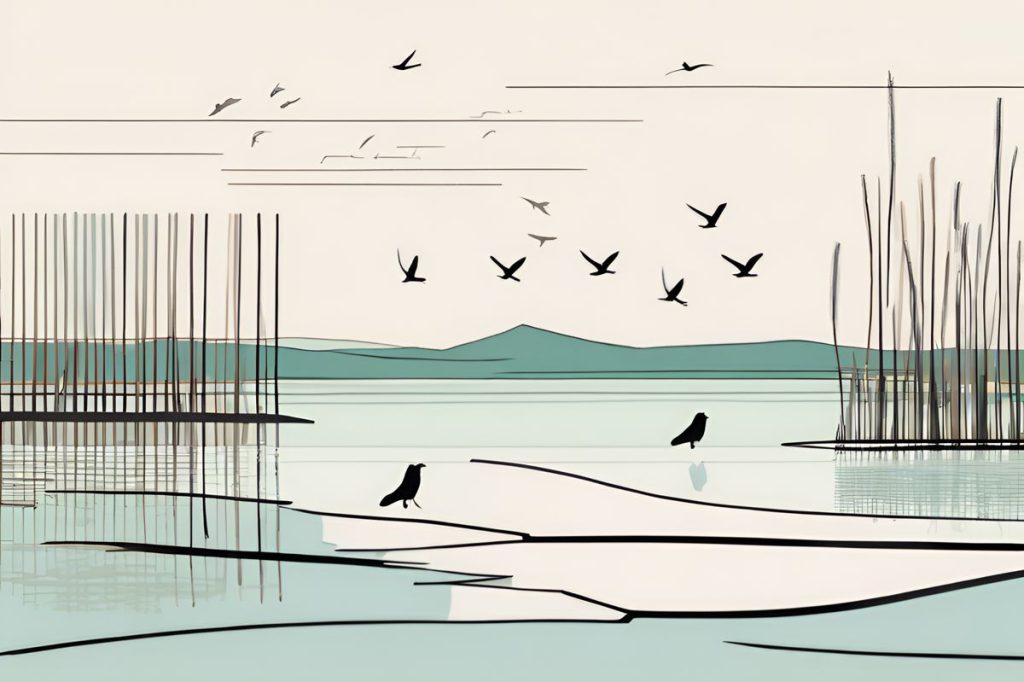The Mia Milia sewage plant in Nicosia is undergoing significant upgrades funded by the European Union, focusing on environmental sustainability and protecting migratory birds. As part of the renovation, domestic sewage will be directly processed, industrial wastewater will be halted, and community input will be prioritized to ensure the eco-friendly balance between urban development and nature conservation.
What are the ecological impacts of the Nicosia sewage plant upgrades?
The Nicosia sewage plant upgrades, funded by the European Union, aim to enhance environmental sustainability. Key features include:
– Direct channeling of domestic sewage to the plant, reducing pollution.
– Ceasing the processing of industrial wastewater to protect water sources.
– Environmental impact assessments and public discussions for migratory bird habitat preservation.
– Community engagement and transparency in the decision-making process.
Environmental Impact and Protection Efforts
The Mia Milia bicommunal sewage treatment plant, situated in the heart of Nicosia, is undergoing significant renovation work. The local government has reassured the public that these developments will not pose a threat to the avian population. This is a response to the growing concerns regarding the drying up of lagoons, which serve as resting spots for various migratory bird species. It’s essential to clarify that the Mia Milia facility is not part of a natural wetland; rather, the lagoons exist due to the water treatment processes.
Interestingly, the ecological footprint of the sewage plant is being thoroughly considered in the renovation plans. The lagoons that have seemingly dried up are a direct result of a reduced influx of wastewater, as the facility’s capacity has declined amid construction. Despite this, the remaining lagoons continue to thrive, thanks to the clean water provided by the local authorities.
Sustainable Development Goals
The European Union funds the upgrade of the Mia Milia sewage plant, ensuring that it adheres to the highest environmental sustainability standards. One of the primary objectives of this eco-centric initiative is the direct channeling of domestic sewage into the treatment facility, bypassing the need for intermediate storage. This step is expected to significantly lower the existing levels of pollution.
Moreover, the upgrade includes a strategy to halt the processing of industrial wastewater, including by-products from dairy and meat processing plants. The contamination from such waste poses a risk to the environment, seeping into groundwater and surface water. The current upgrading process will involve draining a portion of the existing lagoons, while the rest will remain untouched and continue to support the local ecosystem.
Migration and Habitat Preservation
The concerns surrounding the impact on migratory birds have been taken into consideration, with special emphasis on preserving their habitat. An environmental impact assessment was meticulously conducted, followed by public discussions that involved key environmental stakeholders such as Kuskor, the north’s bird protection society. Their input was not only acknowledged but also integrated into both the impact assessment report and subsequent planning phases.
In an effort to balance development with ecological preservation, the renovations of Mia Milia are designed to protect the region’s ecosystem. This includes safeguarding it from the detrimental effects of untreated septic water and industrial sludge. It is not merely a construction project but a comprehensive approach to ensure the protection of migratory birds and the broader environment.
Community Engagement and Oversight
The project also highlights the importance of community engagement in environmental decision-making. The public participation event on August 24, 2021, although sparsely attended, demonstrates a willingness to involve local conservation groups in the dialogue. The implementation of suggestions from conservationists like Kuskor underscores a commitment to transparency and environmental stewardship.
Overall, the sewage plant’s upgrade is a testament to the balancing act between urban development and environmental conservation. It serves as a reassuring reminder that with careful planning and collaboration, human activity can coexist with nature’s rhythm, even enhancing the habitats that countless species depend on.
What are the ecological impacts of the Nicosia sewage plant upgrades?
The Nicosia sewage plant upgrades are designed to enhance environmental sustainability with several key features:
– Direct processing of domestic sewage to significantly reduce pollution levels.
– Halting the treatment of industrial wastewater to protect local water sources.
– Conducting environmental impact assessments and engaging in public discussions to preserve migratory bird habitats.
– Prioritizing community input to ensure eco-friendly development and nature conservation.
How will the upgrades affect migratory birds and their habitats?
Concerns regarding the impact on migratory birds have been addressed through careful planning and assessments. The Mia Milia sewage facility is not part of a natural wetland but creates lagoons through its water treatment processes. While some lagoons have dried due to reduced wastewater inflow during renovations, the remaining lagoons are thriving thanks to clean water management by local authorities. The project prioritizes the protection of these habitats, ensuring that the ecological balance is maintained.
What role does community engagement play in the sewage plant upgrades?
Community engagement is a vital aspect of the sewage plant upgrades. Local public participation events, such as the one held on August 24, 2021, allow residents and conservation groups to contribute to the decision-making process. Feedback from stakeholders, including the bird protection society Kuskor, has been integrated into the planning phases, emphasizing a commitment to transparency and collaboration in environmental stewardship.
How is the project funded and what are its sustainability goals?
The upgrades to the Mia Milia sewage plant are funded by the European Union, which mandates adherence to high environmental sustainability standards. The primary goals of the project include:
– Directly channeling domestic sewage to improve treatment efficiency and reduce pollution.
– Ceasing the processing of industrial wastewater, which poses contamination risks to groundwater and surface water.
These initiatives reflect a comprehensive approach to balancing urban development with ecological preservation, aiming to enhance the local environment while addressing community needs.

